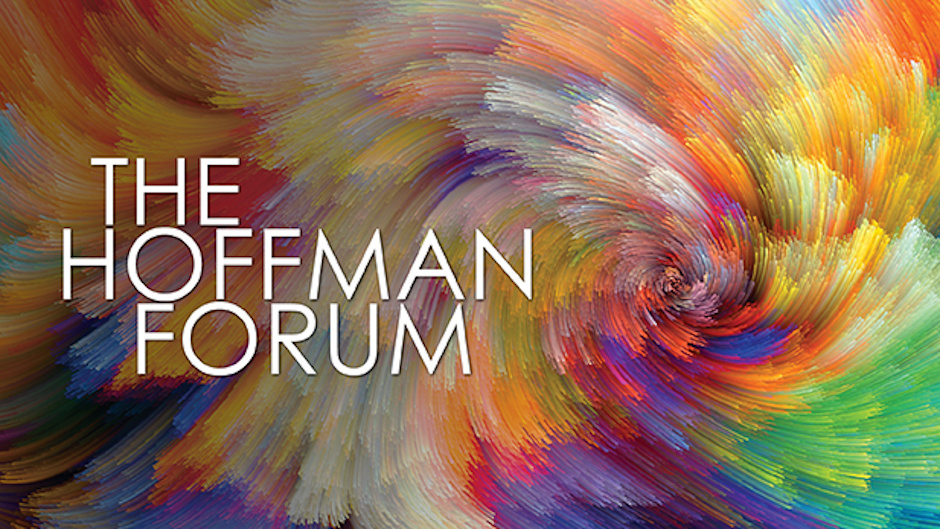A fascinating hot topic in the eclectic and ever-unorthodox realm of internet memes and ironically unmoderated Reddit pages, NFTs have undoubtedly made their mark on pop culture. In the last year, the acronym, which stands for non-fungible token, seemed to erupt from conversational stagnation, captivating the attention of innovators and creatives everywhere. One place where NFTs have been particularly well-received is the increasingly entrepreneurial art world, where they have shown great promise in expanding the marketing and selling potential of emerging artists.
Recently, the Hoffman Forum held one of its Civil Conversations on the topic of NFTs and their growing importance in the art world. The conversation addressed two primary questions: whether the emerging NFT marketplace encourages or facilitates greater access to the primary market for historically underrepresented artists and whether the emergence of NFTs has inspired visual artists to cross over into new mediums of creative work.
The Hoffman Forum operates under the Arts Law Track in Miami Law's Entertainment, Arts and Sports Law LL.M. Program. The forum is committed to the civil exchange of ideas for the benefit of the University of Miami, the greater community, and the wider world, sponsoring collaborative and interdisciplinary programs related to issues at the intersection of law, public policy, the arts, and social justice. As part of its mission, the forum responds to "evolutionary developments among visual and performing artists and arts institutions as they confront and cope with unexpected new norms and realities."
Third-year law student Catherine Perez administered Thursday's conversation, "NFTs: Changing the Game or Gaming the System?" The speakers included Adjunct Professor Vivek Jayaram, founder and president of Jayaram Law, who moderated a conversation among Adjunct Professor Steve Krause, vice president and head of commercial legal at Dapper Labs; artist Jen Stark, and Nicole McGraw, co-founder, and CCO of Jupiter Group NFTs.
The conversation began with the logistics of NFTs
"Well, the dollar that's in your wallet is fungible; if we exchanged our dollars, we'd have the exact same value," said Krause. "So, currency is by definition fungible; an NFT is a digital token that can sit on a block, and that token is associated with some content; it's "hashed" – it calls to a thing. The thing that it's connected to is some form of intellectual property in art, for example. When it comes to the art world and NFTs, if you go to a store and buy a pack of trading cards, baseball cards, for example, you pay five bucks. The owners of the photos pay a royalty to the Major League Baseball Association. However, if you get a valuable card and sell it to someone, you typically don't have to pay any royalties to the MLB. NFTs work differently; you pay the artist even on secondhand sales."
In response to the question of whether the NFT marketplace provides a safe space for emerging artists, Stark, whose work Jayaram described as "extraordinary, psychedelic, and magical," is cautiously hopeful. "Women artists and artists of color make up about 2% of fine art sales; NFT sales total are 5% women. In the NFT/crypto world, people are trying to be more inclusive of women artists, but we'll slowly get to 50-50. The crypto community is trying to support these people; it's a good start."
McGraw, who pivoted her business from a brick-and-mortar art gallery to support artists and entrepreneurs in the NFT space, is likewise optimistic.
"I was blown away by its possibility; [after finding an artist to collaborate with me], I closed my art gallery in Palm Beach and decided to create a discord community," she said. "Overnight, 3,000 new people joined from all places and of all ages.
"The artist I collaborated with got so much more attention for his work. It was like a snowball effect; it kept growing," McGraw said. "There were 135,000 people on Discord by the time of the artwork's NFT drop. The traditional art world is way more stuffy and competitive; the NFT space is much more inclusive, and everyone helps each other because they want the space to grow. The community got behind us, and it's been an amazing ride."
Concerning the inclusivity of the digital art world, Stark is affirmative: "I've been in the fine art world since 2007; there's a lot of hurdles. It's very gated and closed in a lot of way, a lot of exclusiveness. A lot of powerful and rich people control most of the art market. Having NFTs gives more autonomy, and it puts more freedom in our hands. We can have a personal relationship with our buyers; you can even contact them over social media.”
“Community is an important word, but so is utility,” said Kraus. “For someone to want to spend money on something, it has to have value — utility. And that varies from person to person; having direct access to artists is a huge utility. People should be excited by the possible utility of NFTs; there are so many creative ways to build utility."
At the end of the conversation, Jayaram asked the panel to consider the trajectory of NFTs in the market, and the directions artists and other stakeholders might take as they gradually become more accustomed to the new digital medium. Stark provides a compelling conclusion. "I see NFTs as a digital renaissance blooming after the "Dark Ages" of COVID. It's a new avenue of art history."
Read more about Miami Law’s Entertainment, Arts and Sports Law LL.M. Program

